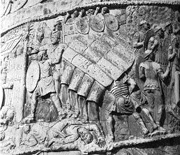The Classical World (92 page)
Read The Classical World Online
Authors: Robin Lane Fox

55. Silver denarius, Rome: Sulla triumphing in a four-horse chariot. 82
BC
.
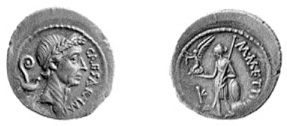
56. Silver denarius, Rome: portrait of Julius Caesar (obverse) and his supposed ancestress Venus (reverse). 44 bc, his final year.
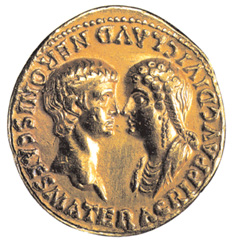
57. Gold aureus, Rome, showing Nero and his mother Agrippina, a unique double portrait of an emperor and an imperial woman, but she was a unique ‘queen’ mother.
AD
54.
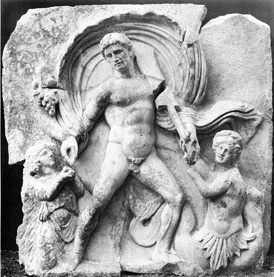
58. Relief frieze from the shrine of the emperors, or Sebasteion, at Aphrodisias in Turkey, showing Augustus with representations of land and sea, symbolizing his power over the world,
c
.
AD
60.
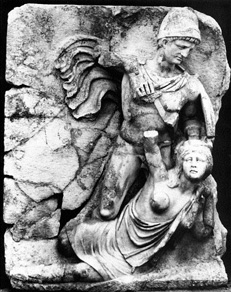
59. Relief frieze from the same site, showing the Emperor Claudius conquering Britannia, as his army partly did.
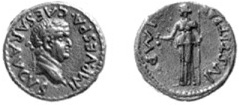
60. Gold aureus struck in Judaea under Titus,
AD
70. Obverse, Emperor Vespasian. The reverse shows the earliest-known figure of Justice, the Romans’ verdict on their sack of Jerusalem and the Temple.
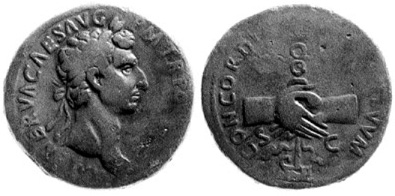
61. Brass sestertius from Rome, ad 96. Obverse, portrait of Nerva, the ‘good’ emperor.
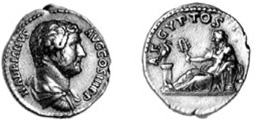
62. Gold aureus from Rome
AD
134–8, with Hadrian (obverse) and a personified Egypt (reverse), one of his types of the provinces.

63. Reconstruction of Trajan’s Library in Rome where the historian Tacitus may have worked (reconstruction by G. Gorski).
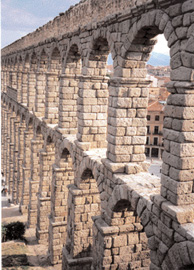
64. The Roman aqueduct at Segovia in Spain, reaching almost one hundred feet at its highest point. Built in the first century or early second century ad.
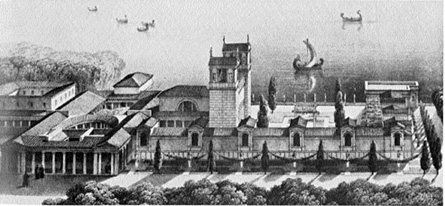
65. A reconstruction of Pliny’s Villa at Laurentum, one of many, based on Pliny’s own Letter. By L.P. Haudebourt, in 1838, after visiting the area in 1815–16.
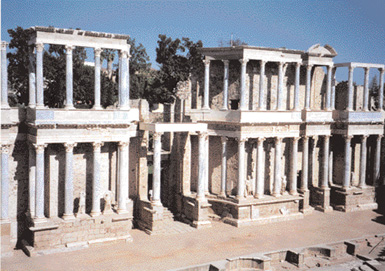
66. Roman theatre, built at Emerita Augusta (Merida, Spain), probably with the backing of Augustus’ general Agrippa. 16/5
BC
.
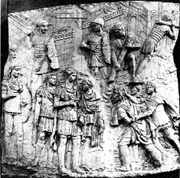
67. Scenes from Trajan’s Column at Rome, dedicated in
AD
113 to commemorate Trajan’s Dacian Wars (in modern Romania).a) Dacian prisoners before Trajan outside a Roman camp.
